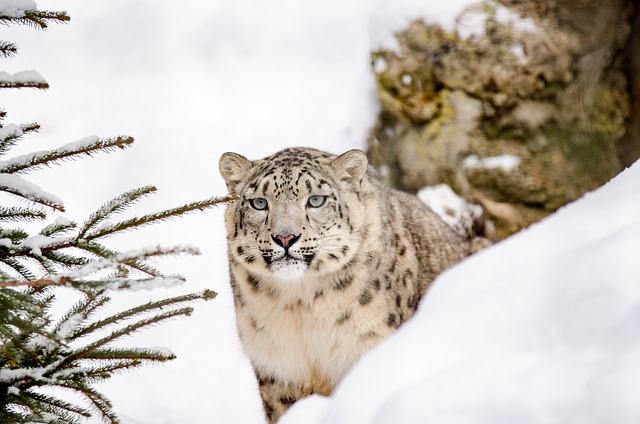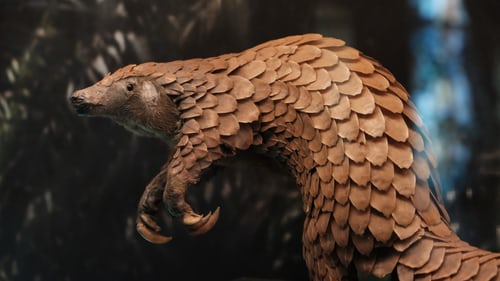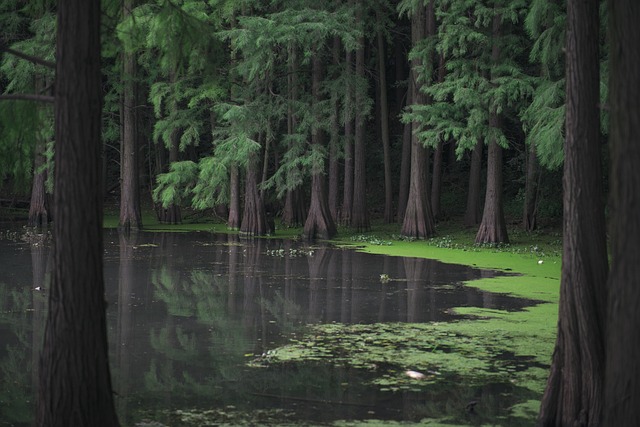Pakistan’s unique wildlife faces significant threats, encompassing population decline, habitat loss, illegal hunting, poaching, and the illicit trade of wild animals. The survival battle of three iconic species that call Pakistan home warrants discussion.
Check out: 10 Critically Endangered Animals That Can Go Extinct By 2050
1. SNOW LEOPARD
The Snow Leopard, scientifically known as “Panthera uncia,” is a species of the big cat family native to the mountains of Central and South Asia. This particular big cat species stands out due to its beautiful smoky gray fur with dark rosettes, which help it stay warm in extreme cold conditions. The Snow Leopard is one of the most camouflaged species within its family. Inhabiting the snowy high-altitude remote mountains, this cat species is the national animal of Afghanistan. Apart from Afghanistan, it can be found in countries such as China, Bhutan, India, Russia, Tajikistan, Uzbekistan, and our beloved country, Pakistan. In Pakistan, snow leopards can be found across the Karakoram Range, the Hindu Kush Range, the Himalayas, and within the Chitral District. Snow Leopards primarily prey on wild animals like ibex and sheep. They are well adapted to their cold, high-altitude habitats, characterized by rugged terrain and extreme weather conditions. Unfortunately, the Snow Leopard is classified as “Vulnerable” by the International Union for the Conservation of Nature (IUCN) due to the decline in its population. This beautiful species is fighting a survival battle against habitat loss, poaching, and climate change. Their habitat is vanishing due to infrastructure development, mining, and agricultural expansion. The fur and other body parts of this majestic cat species are in demand in the illegal wildlife trade, often used in traditional medicine. Snow Leopards are sometimes killed when they prey on people’s livestock, further contributing to the decline in their population. Climate change is causing shifts in temperatures and weather patterns, which negatively affect their prey species. According to the WWF, there are an estimated 4,080-6,590 Snow Leopards left in the wild. Unfortunately, several hundred Snow Leopards are lost each year due to various threats, including poaching and habitat loss.
Also check out: 12 Vulnerable and Endangered Animal Species of Pakistan
2. MUSK DEER
Musk deer, known for their captivating and diminutive stature, are a unique species famed for their musk-producing glands. These extraordinary creatures can be found inhabiting the rugged and remote mountainous regions of Russia, China, Mongolia, Kazakhstan, Kyrgyzstan, Tajikistan, Uzbekistan, Nepal, India, Bhutan, and our homeland, Pakistan. What sets this species apart is the presence of fangs in their mouths, a characteristic shared by only two species of deer—the Chinese Water deer and the Musk Deer. The existence of these musk-producing glands contributes to their high value in the world. It’s these two distinctive traits that have unfortunately led to a rapid decline in the Musk Deer population. The musk obtained from these glands holds a significant value and is frequently employed in the perfume industry and medicinal applications. Tragically, obtaining this precious musk involves the killing of these endearing creatures, leading to a decline in their population. Due to the combined threats of illegal hunting and habitat loss, almost all species within the Musk Deer family are currently classified as endangered. In Pakistan, musk deer can still be found in regions such as Kashmir, Gilgit-Baltistan, and certain valleys within Khyber Pakhtunkhwa.
3. HIMALAYAN BROWN BEAR
The Himalayan Brown Bear, scientifically known as “Ursus arctos isabellinus,” is a remarkable bear species found in Northern Pakistan. In Northern Pakistan, this remarkable bear species can be found in the Himalayan and Karakoram Mountain ranges and in Kashmir. This large and powerful animal has a thick, shaggy coat of fur that can vary in color, often ranging from a pale beige or yellowish hue to a dark brown. Weighing up to 350 kilograms, this animal roams over steep and rugged terrains. Other than Pakistan, this remarkable bear species can also be found throughout the high-altitude alpines and forests of India, Nepal, and Bhutan. In Pakistan, this rare species can be found in the scenic Deosai National Park, Fairy Meadows, Nanga Parbat, and the Astore Valley. This rare but majestic species is listed as critically endangered due to its dwindling population. According to estimations, there are fewer than 1,000 Himalayan Brown Bears left in the world. Some studies suggest the presence of 150-200 Himalayan Brown Bears in Pakistan, while others estimate 50-100 bears. Sadly and unfortunately, these numbers are very low, and conservation efforts are crucial to save this majestic species from extinction. Its population is declining due to habitat destruction, deforestation, poaching, and the effects of climate change. They are also hunted for their fur, meat, and body parts, which are sold for traditional medicinal purposes. The creation of more protected areas with strict anti-poaching management and spreading awareness about the importance of this majestic and remarkable species are the need of the hour. Otherwise, our future generations may not be able to see this majestic animal along with the dozens of other endangered species.
You might also like to check out: Endangered and Critically Endangered Animals of Pakistan and Endangered and Critically Endangered Bird Species of Pakistan
Common threats to these three species, along with others, include habitat destruction, deforestation, poaching, illegal hunting, and climate change. Globally, numerous international organizations, with the support of governments, are working to protect and preserve nature and its species. The Pakistani government should also ensure the safeguarding of its wildlife for the sake of our future generations. Conservation efforts are crucial and can be achieved by raising awareness, implementing stringent wildlife protection laws, creating additional protected areas, wildlife sanctuaries, and national parks with enhanced and rigorous management, and, lastly, taking decisive actions against poachers and wildlife traffickers.
Also read: Illegal Wildlife Trade in Pakistan – Threat to Endangered Species
This article was contributed by Ubaid Sahil. Ubaid Sahil is a student and freelance columnist. He can be reached at ubaidsa9@gmail.com.
We hope you liked this post! Please comment below if you have any suggestions, comments or feedback! We at #envpk love hearing from readers! Thanks!




